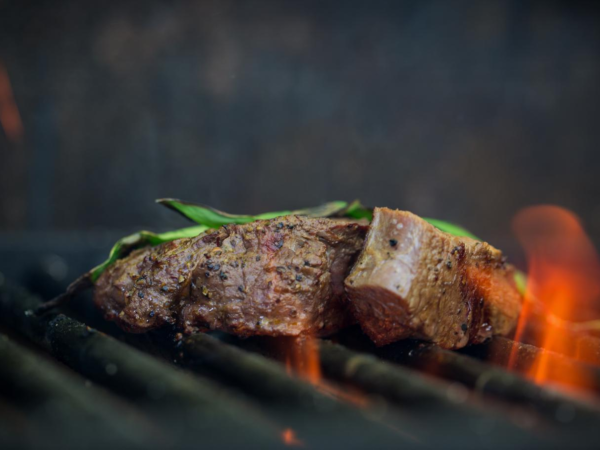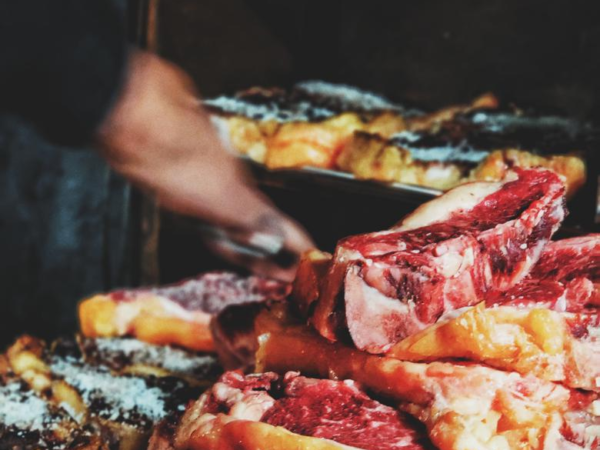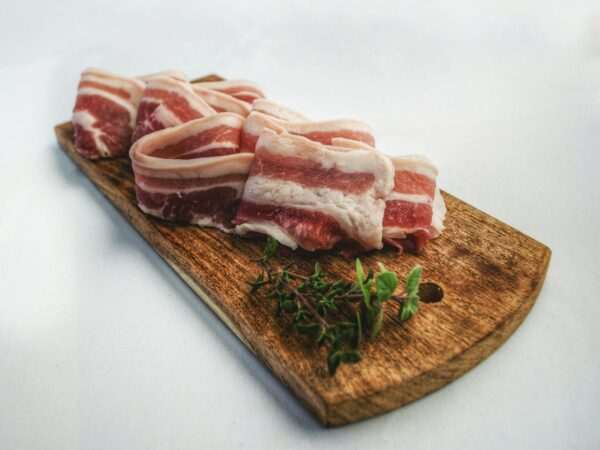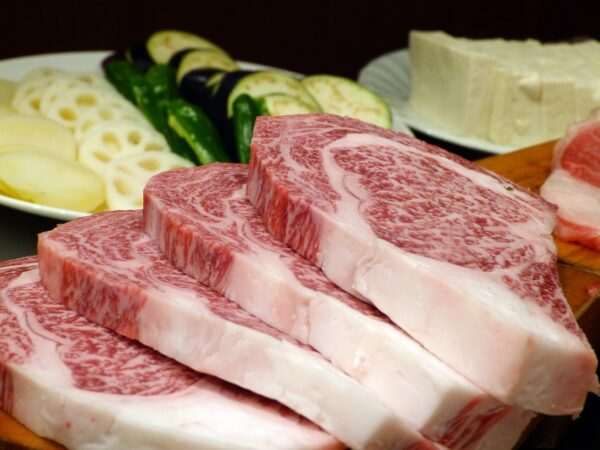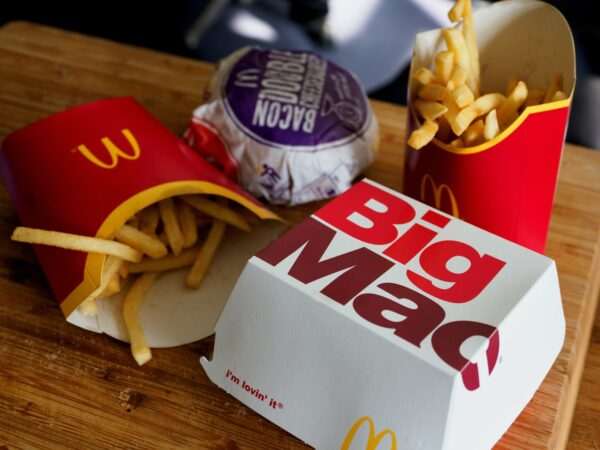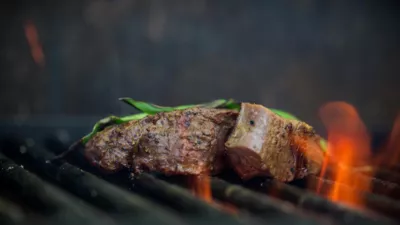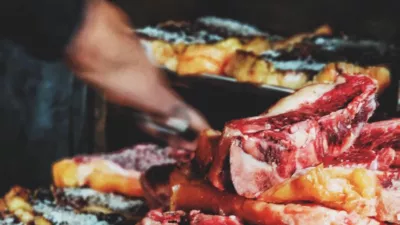Summary. If you’re considering trying out the carnivore diet, here’s your guide! This article breaks down how much you should be eating on a carnivore diet to ensure you get all the essential vitamins and minerals — without overdoing it. You’ll learn what types of meats to eat, how much of them you need to eat, and how to keep your diet varied. Plus, you’ll get helpful tips for controling cravings and achieving success on this diet. Get ready to enjoy meaty meals with health benefits!
Eager to learn about the carnivore diet? How much should you eat each day when on a Carnivore diet? Looking to gain insight into the benefits of a carnivore diet? Read on for more information and tips on how to maximize the benefits of this eating trend. As the popularity of the carnivore diet continues to grow, understanding how much food to eat on it is increasingly important. All meals on the carnivore diet are composed of 100% animal products (meat, fish, eggs, dairy, and organs).
To answer that, it’s important to note that the amount of food on a carnivore diet is much more than on a vegetarian or vegan diet. This is because the caloric density of animal products is much higher and the carnivore diet does not encourage snacking. An average adult should aim to eat around 2-2 grams of protein per kilogram of bodyweight a day.
By focusing on high quality, animal-based products, the carnivore diet can provide the building blocks for a healthier lifestyle. Co-created with our bodies in mind, this diet can help us reach our goals and increase overall well-being. If you’re interested in optimizing your nutrition on the carnivore diet, consider these questions:
What sort of animal products should you prioritize? How can you ensure that your meals are balanced and nutritionally adequate? And how can you track your progress while eating on the carnivore diet? With the right approach, you can reap the many health benefits of the carnivore diet and get the best out of it.
Determining Your Macronutrient Intake: Deciding How Much to Eat and What Macronutrients You Need
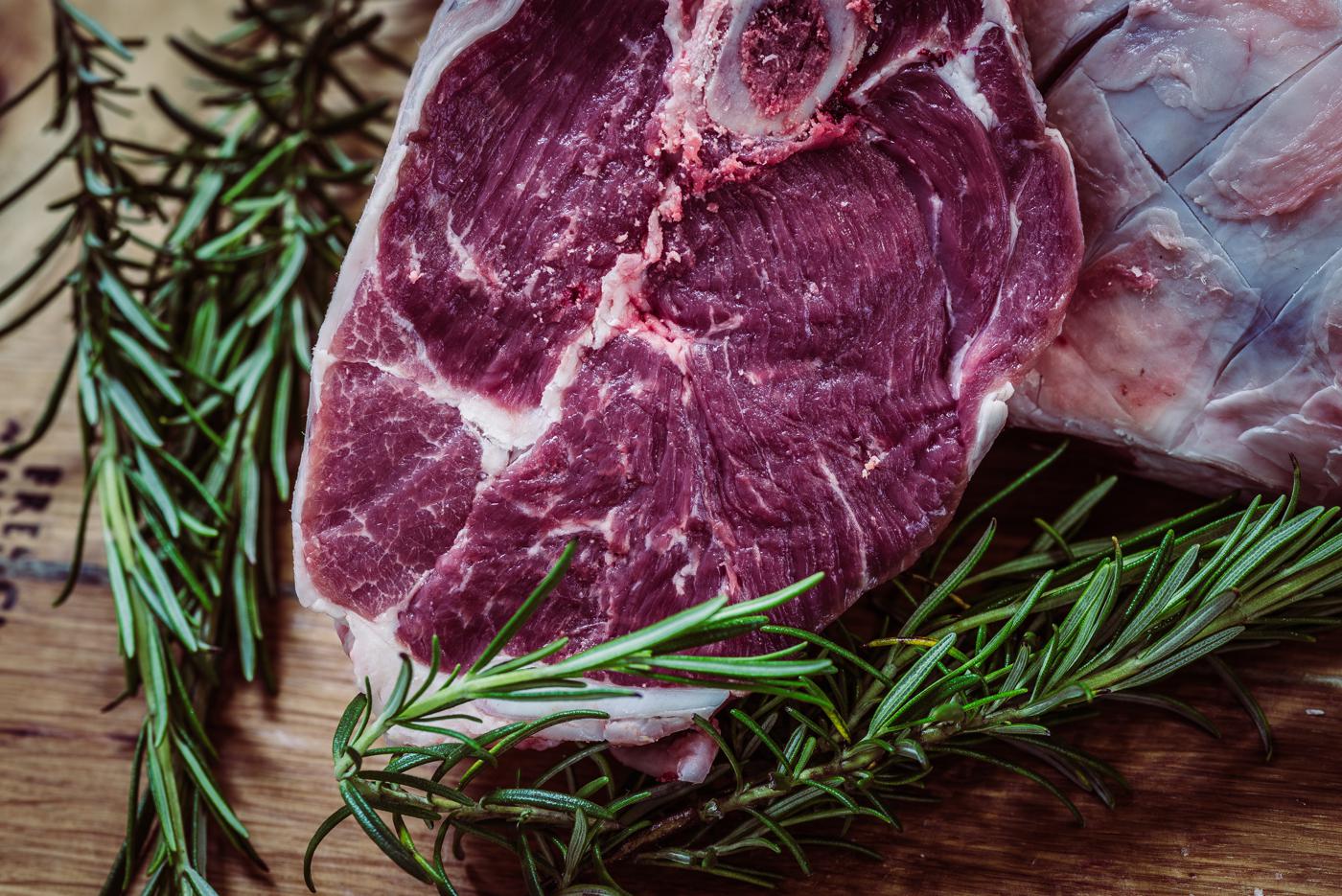
When it comes to defining how much to eat on a carnivore diet, there are several important considerations that you need to take into account. First, it’s important to think about your body’s individual needs for the different macronutrients. The macronutrients are the building blocks of nutrition, such as proteins, carbohydrates, and fats.
Each of these macronutrients has its own specific purpose in the body, so it’s important to ensure that your diet provides enough of each type. For instance, protein should account for the majority of your diet on a carnivore plan. This is because protein is the most satiating of the three macronutrients, meaning it keeps you feeling fuller for longer and is essential for building and maintaining muscle mass. It is recommended that approximately one-third of your total calories should come from protein.
Fats are important for providing energy, supporting cell growth, and regulating bodily processes. To make sure you get enough of the essential fatty acids that are vital for health, opt for sources of animal fat, such as grass-fed beef, eggs, and fatty fish. Finally, carbohydrates are considered to be the least important of the macronutrients when it comes to the carnivore diet.
Carbs are not essential for survival, so you don’t need to worry about including them in your diet. If you do choose to consume them, however, try to opt for sources of vegetables or fruits that are low in sugar. Another key factor to consider when deciding how much to eat on a carnivore diet is your activity-level.
Similarly, if you’re not very active, you may want to reduce your overall caloric intake to allow for weight loss or weight maintenance. Finally, it’s important to consider if you’re aiming to put on muscle mass. If this is the case, then it’s important to eat just enough calories so that your body is able to make use of the extra energy.
Eating too little could lead to the breakdown of muscle tissue. In general, the amount of food that you should be eating on a carnivore diet will depend largely on your individual needs. Everyone is unique and has different levels of activity, so it’s important to take the time to work out exactly how much you should be eating in order to fuel your lifestyle.
Phasing In: How to Ease Into the Carnivore Diet While Maximizing Benefits
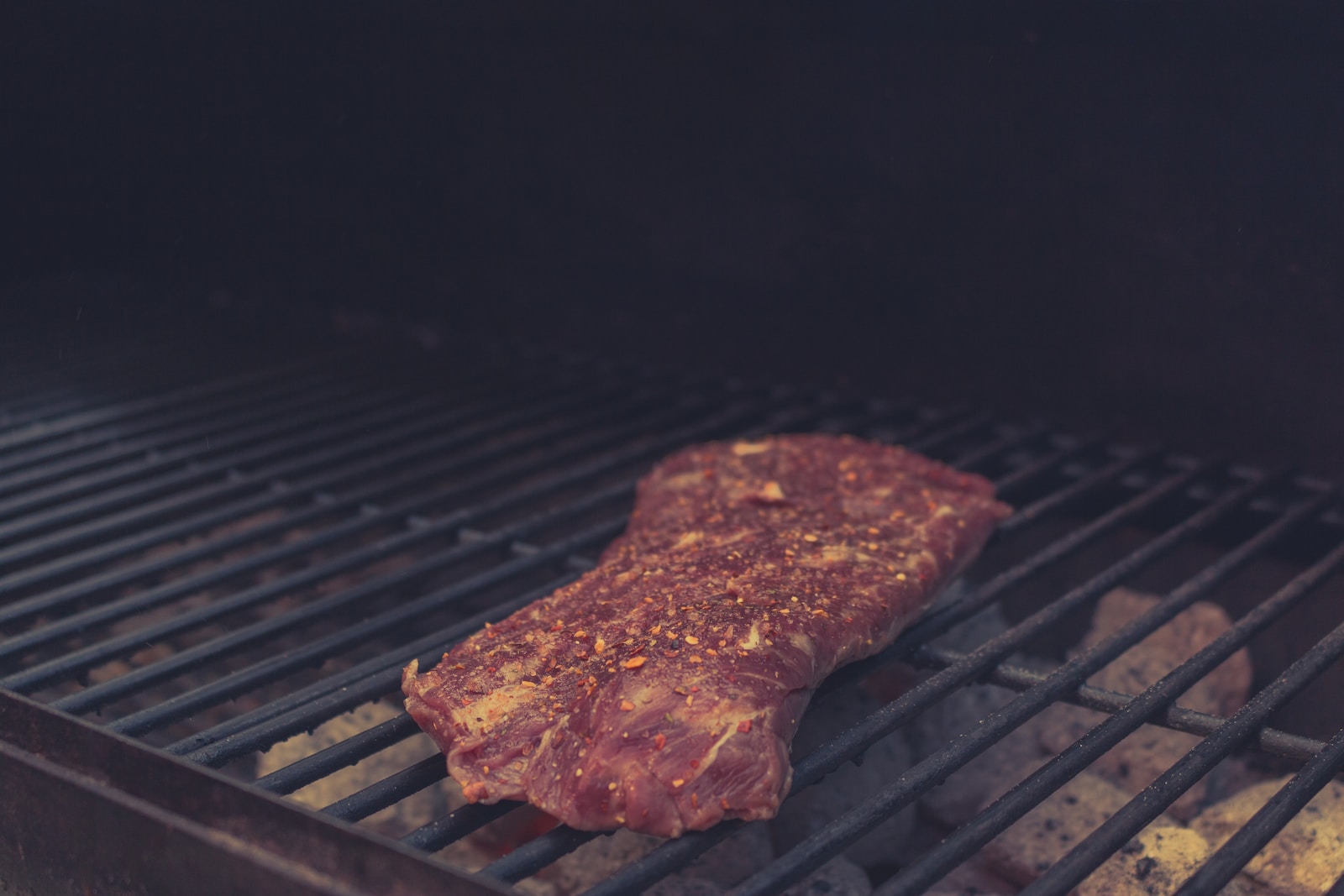
If you’re interested in trying out the carnivore diet, it’s important to take things slowly as you transition from your current eating habits. After all, the dynamic changes that mammalian tissue undergoes when hemoglobin, the iron-containing oxygen-transport pigment, is switched from transporting oxygen to processing dietary fat instead is an incredible adaptation!
To make the most out of the diet, here are a few tips on how to ease yourself into it, while still maximizing benefits. First of all, it’s important to understand the concept of how much you should be eating on the carnivore diet. This way, you can ensure that your body remains adequately nourished while your digestive system will have more time to adjust to the new dietary approach.
It’s also important to take into consideration the caloric density of the diet. Many experts recommend adding in foods that are higher in fat and lower in carbohydrates as a way to reduce hunger and increase satiation. This way, you’ll still be able to get the same amount of calories as you normally would, but with much more attention and focus to your internal conditions.
Finally, it’s important to listen to your body and make sure you are taking things at a comfortable pace. Whether you plan on doing a full-on carnivore diet or just eating lower-carbohydrate meals every once in a while, the most important thing is to ensure that you’re listening to your body and doing what feels right for you.
Additionally, it’s important to stay well-hydrated and make sure your mineral consumption is adequate. By gradually transitioning into the carnivore diet and paying close attention to your body’s needs, you can ensure that you’re getting the most out of this lifestyle while making sure that it still remains enjoyable and enjoyable and helps you reach your desired goals.
Intermittent Fasting: Exploring The Practice And Its Benefits
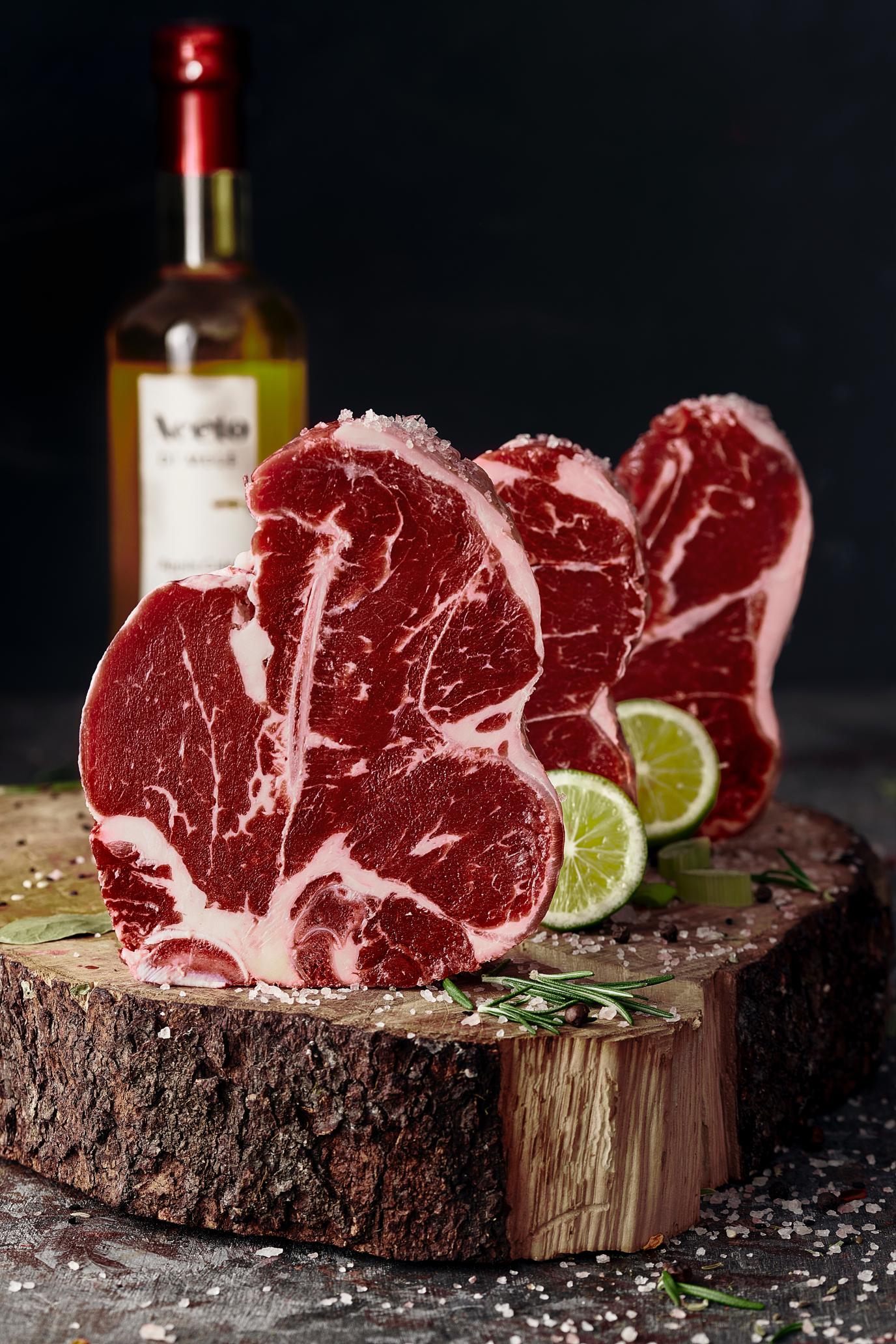
Intermittent fasting has become increasingly popular in recent years, and for good reason. It can help you lose weight, decrease body fat, and even improve your overall health. But one question that often gets asked is, “How much should you be eating on a carnivore diet?”Carnivore diets are based on the idea of eating mainly or only animal-based products such as meat, dairy, and eggs. Unlike most diets, carbohydrates such as grains, fruits, and vegetables are typically avoided.
While it is possible to include some plant-based items such as nuts and seeds, the focus is generally on animal sources of protein. Since intermittent fasting is typically more restrictive than other types of diets, it’s important to be mindful of your calorie and macronutrient intakes in order to make sure you’re getting the nutrients your body needs.
It is generally recommended that you consume 3-5g of protein per kg of body weight each day, whether you are following a carnivore or a more traditional diet. That being said, since most people don’t get enough protein from animal sources on a carnivore diet, you may find yourself needing to cut back on your daily protein intake to compensate.
A good way of doing this is by supplementing with vegan sources of protein, such as soy, pea, and hemp proteins. Another important factor to consider is calorie intake.
Most carnivore dieters eat around 1,500 to 2,000 calories per day, not including any extra snacks or snacks that come with meals. Finally, it is important to note that while a carnivore diet may offer some health benefits, it does not provide complete nutrition. You should strive to make up for any essential vitamins and minerals your body may be missing.
Supplements are a great way to ensure you are getting all the vitamins and minerals you need. Ultimately, when it comes to how much to eat on a carnivore diet, it’s important to listen to your body and adjust accordingly. Eating enough protein, calories, and other essential vitamins and minerals is key to getting the most out of your diet.
Overcoming Challenges: Common Obstacles to Success And How to Overcome Them
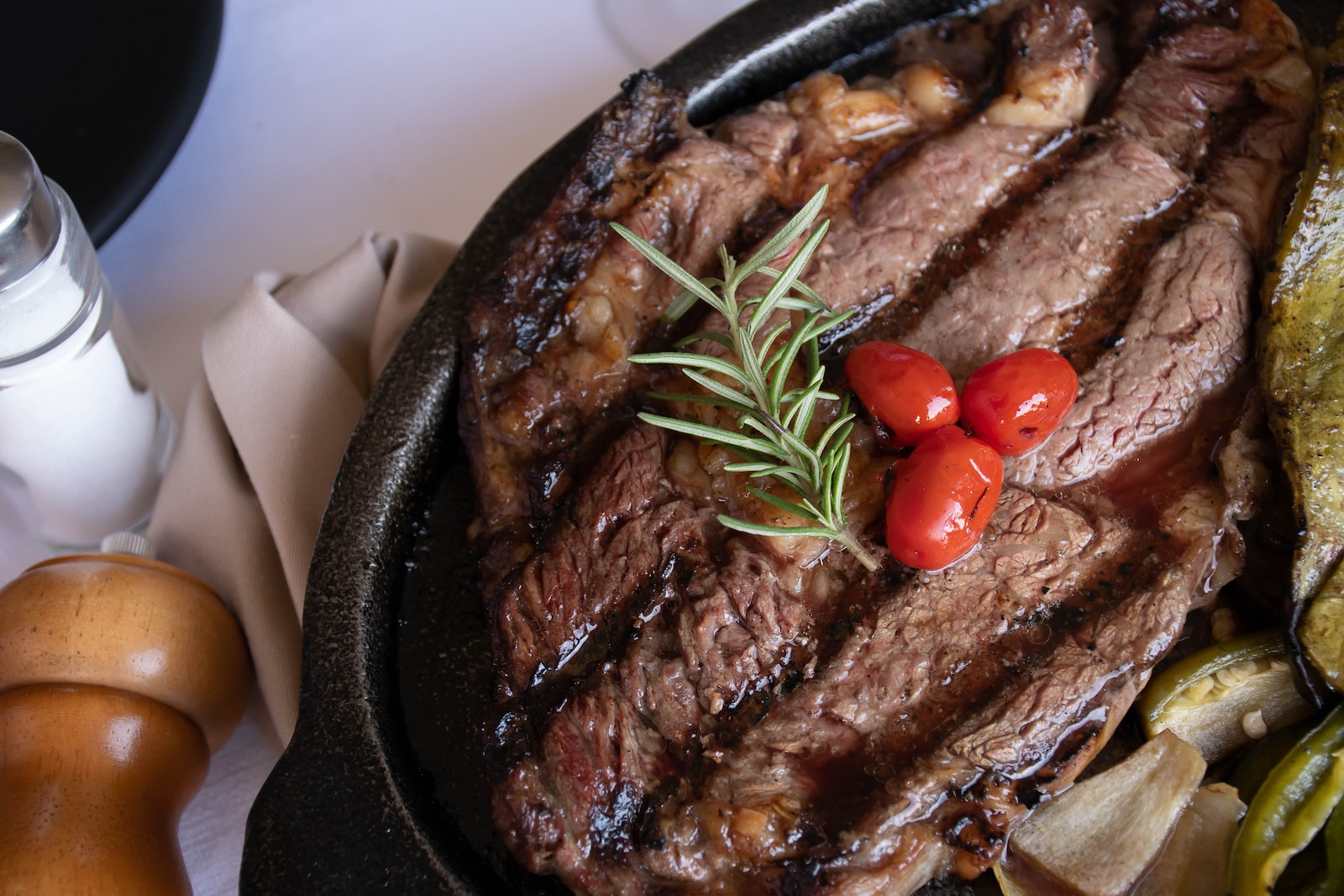
When it comes to changing our habits and improving our lifestyle, one of the most difficult challenges is overcoming the obstacles that stand in our way. Everyone has their own unique set of challenges, but how do we make sure that we actually beat them and succeed in our endeavors? We can start by changing the way we view our obstacles and understanding the common obstacles to success that everyone faces.
One of the biggest obstacles to success comes in the form of our habits or lack thereof. Habits are formed by our behavior and actions, and when it comes to creating lasting change in our lives it’s often our habits that either keep us stuck in our current situation or propel us forward towards a better future.
Another obstacle to success that many people face is a lack of confidence in their abilities or a fear of failure. We all have doubts and fears, but it’s important to understand that failure is simply part of the process of growing and achieving success. By distinguishing between productive fear and unproductive fear, we can learn to accept and embrace our fears and learn to not be afraid of failure and the possibility of success.
In addition to ones habits and lack of confidence, another common obstacle to success is procrastination. When it comes to overcoming the challenges and obstacles that come our way, it’s all about awareness and understanding.
By acknowledge and understanding the common obstacles to success we can better identify our own obstacles and then take the necessary steps to conquer them and achieve the success that we strive for. Take the time to reflect on your own habits and attitude towards success, and strive to make the changes necessary to reap the rewards of success in all areas of your life.
Protein Amounts: Getting the Right Amount Of Protein To Fuel Your Body And Achieve Optimal Health

If you’re considering taking up a carnivorous diet, it’s essential to ensure you get the right amount of protein. Eating too little protein can lead to muscle loss, fatigue, and even depressive symptoms. Eating too much protein can cause problems like bloating, excess fat gain, and it can even interfere with digestion. So, how much protein should you be eating on a carnivorous diet?
The good news is that you probably don’t need to get as much protein as you might think. 8-2g of protein per kg of body weight per day. So, if you weigh 70 kg, that works out to between 56-84g of protein per day, depending on your activity levels. That said, it’s important to remember that everyone is different and there’s no one-size-fits-all approach to protein consumption.
In addition to ensuring that you’re getting enough protein, it’s also important to make sure that your protein sources are of the highest quality. Wild-caught salmon, grass-fed beef, free-range chicken, and organic eggs are all excellent sources of protein and contain essential vitamins and minerals your body needs. Finally, it’s worth noting that getting adequate protein is only part of the equation when it comes to health and nutrition. Eating a variety of healthy foods, engaging in regular exercise, and leading a balanced lifestyle are all key components of achieving optimal health.
What To Eat: Crafting a Carnivore Meal Plan That’s Delicious and Nutritious

If you’ve jumped on the carnivore bandwagon, congratulations! You’re taking steps towards healthier eating and embracing one of the biggest health trends of the moment. By eating solely animal products, you’ll be getting a ton of important nutrients and minerals that you don’t always get on a plant-based diet. But—how much should you be eating on carnivore?
The short answer is that it depends on your overall goals, your body composition, your activity levels, and many other factors. However, there are a few tips and tricks you can use to craft a nutritious and delicious carnivore meal plan that gets you the nutrients you need. Firstly, it’s important to make sure that you’re getting enough protein. Aim for at least 1-
If you’re trying to gain muscle, a high-protein diet should be your main focus. If you’re not trying to build muscle or increase your performance, then you won’t need to worry as much about getting enough protein. You also need to make sure you’re getting enough calories in general to meet your goals.
If you’re trying to lose weight, aim for a calorie deficit – that is, fewer calories than your maintenance level. And if you’re trying to maintain weight, then make sure you’re eating enough calories to make up for any energy you’re burning throughout the day (e. g. through exercise).
You can also include some grass-fed beef, wild seafood, and organ meats like liver or heart—these are super nutrient-dense and are a great way to make sure your meal plan is both delicious and nutritious. In addition, the key to a successful carnivore diet is variety. You should be eating different types and cuts of meat, and incorporating different spices and flavoring to your meals in order to make them interesting and enjoyable.
Finally, having healthy snacks on hand is a great way to make sure you’re getting all the nutrients you need. Make sure to stock up on things like nuts, seeds, and nut butters, hardboiled eggs, jerky, and other protein snacks to fill in the gaps in your diet. By following these tips, you’ll be able to craft an enjoyable carnivore meal plan that is both delicious and nutritious. Good luck and enjoy!
Calorie Counts: How to Determine How Much You Should Eat On The Carnivore Diet
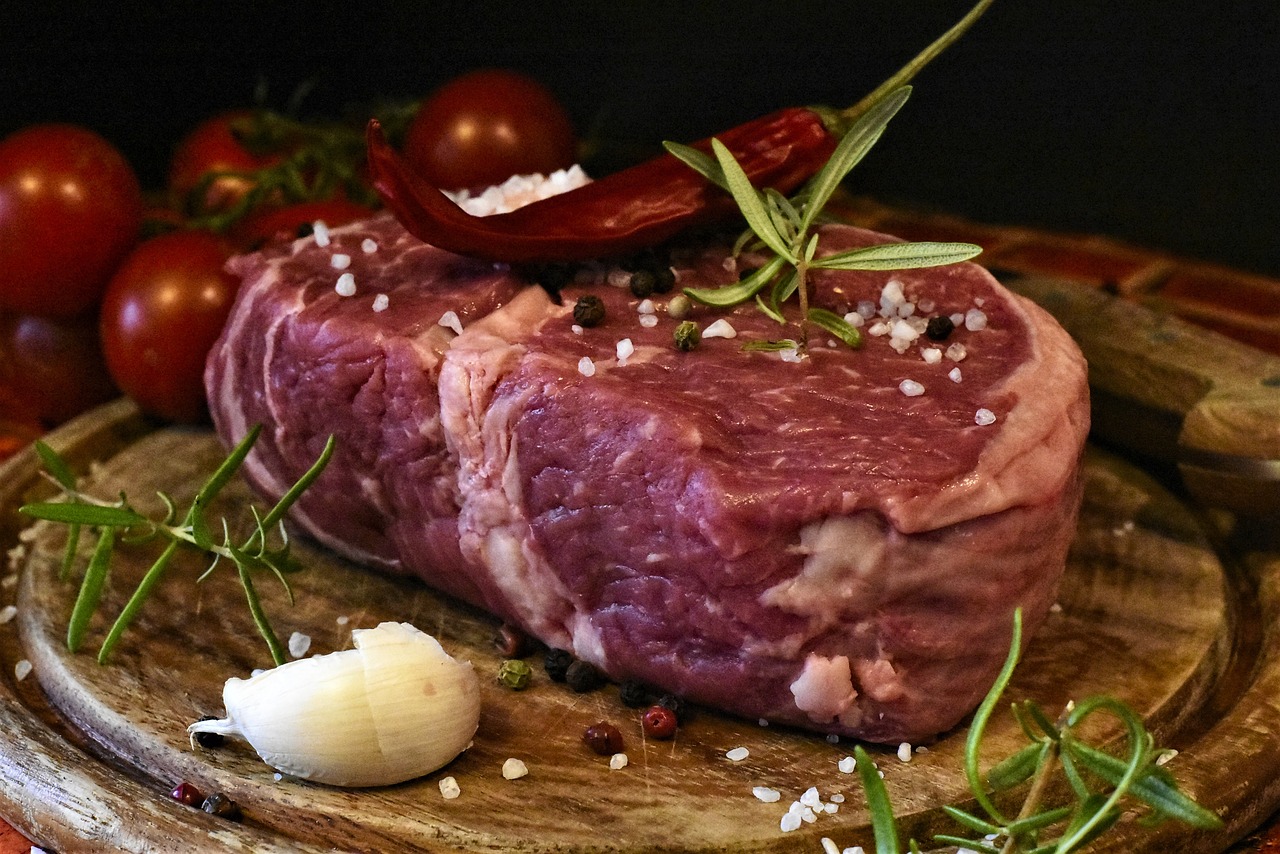
Eating enough calories is an important part of any diet, including the Carnivore Diet. But how do you know how much you should be eating on the Carnivore Diet? It can be tricky to determine a specific number of calories that is right for you, but there are a few things you can do to find the best amount of calories for you.
First, it is important to remember that your daily caloric needs can vary depending on many factors, including your age, sex, height, weight, and activity level. Additionally, your current body composition, any existing health conditions, and your goals are all important to consider. When it comes to the Carnivore Diet, there is no one-size-fits-all answer to how many calories you should be eating.
Sometimes, it takes experimentation to determine the best caloric intake for you on this diet. Your individual calorie needs can also vary depending on the variations in the diet, such as how much animal products, dairy, and eggs you’re consuming.
Different animals and animal products contain different amounts of fat and protein, and fats contain more calories per gram than proteins. It’s important to pay attention to how your body feels when you eat a certain amount of food. If you feel overly full or bloated, you’re likely eating too many calories.
One way to fine tune your calorie intake on the Carnivore Diet is to track your calories using an app or a food log. Recording your food intake, along with the amounts eaten, and the responses from your body can help you find a comfortable and sustainable level of caloric intake for your lifestyle. Eating enough calories is an important part of any diet.
However, the Carnivore Diet does not have a one-size-fits-all calorie requirement. With some experimentation, tracking, and self-awareness, you should be able to find the right amount of calories for you on the Carnivore Diet.
Recommendations: Suggestions for The Best Amounts To Eat On A Carnivore Diet
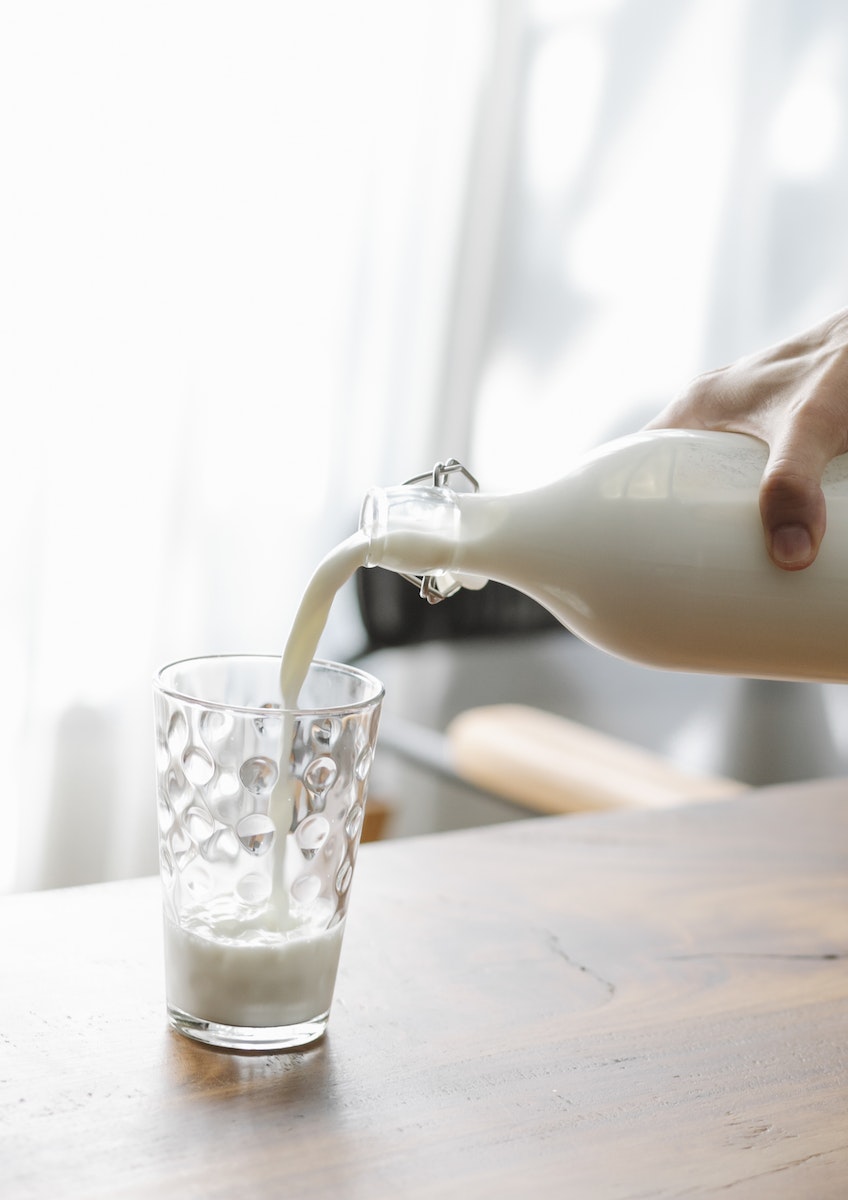
Are you interested in trying out a carnivore diet? If so, you may be wondering how much you should be eating to get the most out of this way of eating. After all, being on a diet that relies on animal-based foods can present its own unique set of issues.
Fortunately, there are some easy-to-follow guidelines that you can use to determine the best amount of food for you. First of all, you’ll want to consider your body type. People with a smaller frame may need to eat less than those who are larger.
As always, however, it’s best to talk to your doctor or dietitian for personalized nutrition recommendations. You’ll also want to factor in your activity level. If you’re relatively sedentary, you’ll need less food than more active individuals. An active person with a larger frame may need as much as eight ounces of meat per meal, while a less active person with a smaller frame may only need two to three ounces per meal.
When it comes to meal timing, think about how many and how often you should be eating. This will ensure that you’re getting an appropriate amount of calories and nutrition throughout the day while allowing time for your body to process the food. Finally, remember that it’s important to listen to your body.
Everyone is different, so what works for one person doesn’t necessarily have to work for you. Pay attention to your hunger and fullness cues and adjust your eating accordingly. By being mindful of your individual needs and following these guidelines, you can make sure that you’re getting the right amount of food on the carnivore diet. Good luck!
The End Of The Journey
The carnivore diet is an intriguing dietary approach that has recently gained lots of popularity. The power of the carnivore diet lies in its simplicity as well as the intense health benefits that it can offer. But how much should you be eating on the carnivore diet to reap those benefits?
Understanding how much food to eat on the carnivore diet means understanding the relationship between calories, macronutrients and basic dietary principles. Calorie needs for the carnivore diet are determined by the same overall guidelines as any diet. Gender, age, activity level and other factors are all taken into account when determining how much calories you need each day.
Protein should make up the majority of your calories on the carnivore diet – typically around 60-80%. You should supplement this with healthy fatty acids like monounsaturated fat, polyunsaturated fat and omega 3 fatty acids. Try to make sure your fat intake is no greater than 40%, and insignificant amounts of carbohydrate should be consumed. This dietary strategy will ensure you have the right fuel to feel your best while on the carnivore diet. Lastly, when it comes to portion size, it’s recommended to consume a variety of foods of varying sizes to prevent boredom and nutrient deficiencies.
When you’re paying attention to both portion size and overall macronutrient composition, you will find the right balance of nutrition on the carnivore diet. The carnivore diet is an incredibly powerful tool for achieving great health and achieving your wellness goals, but it’s important to understand how much you should be eating on this diet plan.
By adhering to dietary guidelines and understanding your calorie, macronutrient and portion needs, you’ll be able to stay on top of your nutrition and enjoy the full benefits of the carnivore diet. Do you think this diet could be the right fit for you? How will you ensure that your nutrition stays on track as you transition to the carnivore lifestyle?
FAQs: The Insider View
Is beef just cow meat?
Yes, beef is essentially cow meat.
Why do we call cow meat beef but chicken chicken?
‘Beef’ is an old term used in Old English to refer to the meat from an adult male cow, while ‘chicken’ is a Middle English term for the kind of poultry we now know.
Is beef just cow?
Yes, beef generally comes from cattle, specifically cows.
What do we call meat of a chicken?
The meat of a chicken is often referred to as chicken meat or chicken flesh.
What is the real name of cow meat?
The real name for cow meat is beef.
Used Reference Links:
https://carnivoreinsider.com/how-much-meat-to-eat-on-a-carnivore-diet/
https://www.wildfoods.co/blogs/wild-blog/how-much-meat-should-you-eat-on-a-carnivore-diet
https://www.insider.com/guides/health/diet-nutrition/carnivore-diet


